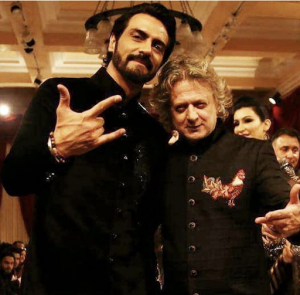This article is written by Vasundhara Thakur pursuing a Diploma in Intellectual Property, Media, and Entertainment Laws from LawSikho.
Table of Contents
Introduction
With the start-up cultural boost in the Indian economy, the fashion industry has now become one of the fastest-growing industries and perhaps the most affected when it comes to seeking legal protection against replication and plagiarism of the products they design. Major stakeholders in the fashion industries are the designers of apparel, jewellery, footwear, and different accessories like watches, scrunchies and/or handbags. Since there is no specified statute that solely governs the fashion industry, it creates chaos and confusion among the start-ups as to which governing law one should seek registration of their products. Whilst the copyright law protects the original artistic work, the Indian Designs Act protects the original and novel design related to the appearance and aesthetics rather than the functionality. So, to curb this dilemma, let’s dive deeper into various protections that are available under both laws. The article throws light upon Copyright and Design laws concerning the start-up fashion industry.
Protection under copyright in the fashion industry
Copyright protects the creative work of designers and artists in the form of artistic work described under Section 2(c) of the Indian Copyright Act, 1957. However, artistic works like distinct names, phrases or designs that are familiar, others are not protected under the Copyright Act, 1957.
As per the Indian copyright law, the registration of copyright is not obligatory for holding the copyright on original creative work, it comes under the ambit of copyright law the moment a creative work is created and given a tangible form. A copyright registration does not confer any special privilege or rights concerning the creative or artistic work, however, registration of copyright and certificate of registration merely acts as a prima facie evidence of originality of an article/creative/artistic work in the court of law.
A few examples of copyright in the fashion industry could be an original artistic work like pattern on the fabric, the design of apparel or jewellery, painting, sketches and accessories. Rohit Bal the famous Indian fashion designer has copyrighted his cockerel motif design which was displayed at the India Couture Week (ICW).
(Picture source: fashionnetwork.com)
Protection under Designs Law in the fashion industry
Under the intellectual property law, the aesthetics and looks of a product often come under the realm and the protection of the Designs Law which in India, is governed by the Industrial Designs Act, 2000 (hereinafter refer to as “the Act”). The Act protects the creation of original designs while providing protection against any infringement thereof. An industrial design in its most common sense can be defined as the ornamental shape and form of any article or the aesthetic part of any multi-dimensional article. The uniqueness lies in the form and the shape of the article, it can be a novel combination of lines and patterns or an uncommon combination of colours. Design protection can be secured in different kinds of articles be it for leisure or an industrial item (clothing, electronics, automobiles and the likes) as defined under Section 2 (d) of the Act.
Industrial designs are associated with the appearance of an article independent of its functionality. The Act only protects the unique shape or design of an article and not the functionality or the uniqueness of the article. There are certain designs that cannot be registered and are specified under Section 4 of the Act.
An industrial design can be protected for a period of ten years, which can be further extended for a period of five years beyond which the design shall lose its exclusivity and will become part of the public domain. Since it is a territorial right, it can be protected and enforced only in India. However, in case, protection is sought in any other territory, a separate application must be prepared according to the prescribed procedure and fees of the respective territory. An example of design could be the shape or design of the dress and the unique fabric by which the dress is made of.
Why copyright and/or design protection is needed in the fashion industry?
With the fast pace of growth of the fashion industry, the new designers or start-ups need to get their creative and unique works protected under the relevant statute, as it not only protects the creative aspects of the artistic work and/or the original design but also will safeguard them from the infringers with legal remedies. It provides a monopoly on a product for a limited time while encouraging the creators and/or designers by providing creative space and freedom to create more original and unique designs and products.
Copyright vs. design
Both copyright law and design law provide different kinds of protection, where the Design Act provides limited protection, copyright law covers a wide variety of rights and broader protection to the fashion industry. The same has been enumerated below:
- Any design which is unregistered under the Act cannot seek legal remedies or protection under the Designs Act. So, to avail, any legal protection or exclusive use of a design the Act mandates the user to get it registered. Legal rights can be enforced only after the successful registration of design. Whereas, it is advisable to get copyright registered, however, the registration of copyright is not mandatory to avail such legal remedies or protection under the Copyright Act.
- Design is a statutory right and not an inherent right. The Act provides protection only after the registration of a design. Whereas, copyright is a common law right and it is protected from the moment it comes into existence that’s why it is considered as an inherent right.
- The term of protection of a copyright is usually for the lifetime of the original creator or author or owner plus sixty (60) years. Whereas the term of protection of design is ten (10) years, which can extend to five more years subject to the renewal.
- Any original literary work, artistic work, dramatic work, musical work, cinematograph film, sound recording and visual recording are protected under the ambit of copyright law. Whereas, only original and novel design is protected under the Designs Act.
- Copyright can be registered even after the intimation to the public, whereas a design loses its originality if it catches the eye of the public without registration.
- A design needs to be registered as per the class it belongs to as classified under the Locarno Classification which is in harmony with the classification systems across the world. Whereas, copyright subsists in the original artistic work as prescribed under Section 2 (c) of the Copyright Act.
- The outcome or finished products that can be applied to an article comes under the purview of the Designs Act, whereas, copyright subsists in the individual artistic work even if it has not been applied to an article.
Critical analysis
The Copyright Act, 1957 under Section 15 has established that once a creative work gets protection under the Designs Act and when it is applied to any product or article to give it an aesthetic effect and is commercialized more than 50 times through industrial manufacture, the creative work shall lose its protection under the Indian Copyright Act and will come under the protection of the Design Act, 2000. Whereas, Section 11 of the Designs Act specifies copyright on the registered design for a term of ten years, which can be renewed for a period of five years later on. The primary distinction between a design and an artistic work lies in the applicability of design in an article, while an original artistic work falls under the category of original artistic work, however, its derivatives come under the realm of designs.
The registration process of designs and copyright
Design
For registering an article under the Design Act, 2000 an application for registration can be filed in Form 1 along with the prescribed fee. Form 1 shall include the details of the creator like their full name, postal address, nationality, details of the article, including its name, class or category number as identified under the Locarno classification. The Applicant or their representative needs to send the physical copy of the form in case they have earlier applied electronically.
Copyright
Although the registration of copyright is not mandatory, it is advisable to get it registered. While applying for the copyright registration, an applicant must fill form XIV or electronically before the copyright registrar, depending on the type of copyright work. In case, the applicant is filling the application by their advocate, a power of attorney along with the form and prescribed fee along with the details of the owner or creator of the artistic work.
Significant case laws
Microfibres Inc. vs. Girdhar & Company & others
In this case, the Delhi High Court held that the intent of the legislature was to provide higher protection to original artistic works, however, any activity that is commercial in nature shall grant a lesser period of protection. It was further held that the original artistic work which might be used to industrially produce the article shall fall under the definition of Section 2 (c) of the Copyright Act as artistic work and the original painting shall be protected as the copyright, however, the design derived from it for the purpose of industrial production were said to be covered under Section 15 and shall be protected as it would be registered as a design under the Designs Act.
Ritika Private Ltd. vs. Biba Apparels Private Ltd
The Delhi Court dismissed the plea stating that once the copyrighted work of Plaintiff was applied for the production of dresses exceeding fifty in number, the Plaintiff lost the copyright ownership and since the plaintiff has not secured the registration as mandated by the copyright Act for the registration of sketches, drawings and designs under the Designs Act, the plaintiff can not seek an injunction for the infringing activity.
Puma vs. Forever 21
In this case, Puma filed an Intellectual property infringement for design patent infringement case against Forever 21 for its designer footwear known as ‘Fenty’, the brand ambassador of the Fenty line was the famous musician Rihana. Forever21 filed a motion to dismiss Puma’s complaint. The US Court held that the design protection can be granted to an article for its unique design, in this case to the ‘Creeper sneaker’, however, it was held that it cannot be protected under the Copyright law merely because it is endorsed by a celebrity.
Star Athletica vs. Varsity Brands
It was held that if a design and product are inseparable then it would not come under the ambit of copyright. Further, the higher court ruled that any kind of two-dimensional or three-dimensional graphics can be separated and identified independently and hence any design that is capable of being depicted separately in a pictorial and/or sculpture form from the product, could come within the purview of copyright.
Conclusion
Since the fashion industry is dynamic and with fast fashion brands taking over the fashion market it is suggested to the designers of start-ups and fashion houses to register their unique creations as per the production and marketing of each product or segment of products under the respective law of design or copyright. However, if a design is registered under the Designs Act, 2000 then it is not eligible for protection under the Copyright Act even though it may be an original artistic work. In the case of a design that can be registered under the Design Act, however, not so registered are protected under the Copyright Act if the quantity has not produced more than fifty by using the industrial process by the copyright owner. Therefore, the designs which cannot be registered under the Designs Act are protected under the Copyright Act if they are original artistic work.
The protection granted by the Design Act is not copyright protection, but a true monopoly based on the statute. Although there might be an overlap between both the Acts with regards to design, the two statutes do not provide the same protection. Where copyright registration is voluntary the designs Act mandates registration for legal protection.
It is further concluded that copyright law provides a longer duration of protection as compared to the design law and any product that is one of a kind shall avail the longer protection than the fashion products which are made in bulk for mere commercialisation purposes.
References
- http://baskaranslegal.com/blog/2020/07/06/fashion-industry-and-ipr-dilemma
- https://legaldesire.com/landmark-cases-related-to-fashion-industry-in-2020/
- https://www.forbesindia.com/blog/legalese/copyright-vs-design-the-continuing-dilemma-in-the-fashion-industry/
- https://www.lexisnexis.com/community/casebrief/p/casebrief-puma-se-v-forever-21-inc
Students of Lawsikho courses regularly produce writing assignments and work on practical exercises as a part of their coursework and develop themselves in real-life practical skills.
LawSikho has created a telegram group for exchanging legal knowledge, referrals, and various opportunities. You can click on this link and join:
 Serato DJ Crack 2025Serato DJ PRO Crack
Serato DJ Crack 2025Serato DJ PRO Crack












 Allow notifications
Allow notifications



